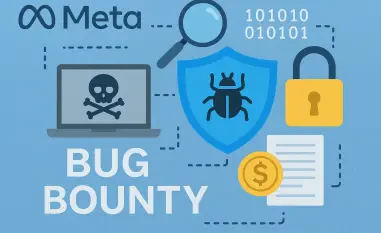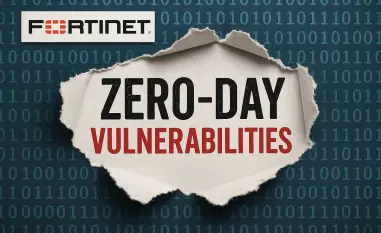Imagine a software developer, eager to streamline a project, downloading a seemingly innocuous package from a trusted open-source repository, only to unknowingly unleash malware that wipes data or compromises entire systems, posing severe risks to software supply chains. This scenario is becoming alarmingly common as malicious packages infiltrate ecosystems like Go and npm, threatening the integrity of development processes. This roundup gathers insights, warnings, and strategies from various cybersecurity experts and industry sources to shed light on these cross-platform threats. The purpose is to explore the nature of these dangers, compare perspectives on their impact, and provide actionable guidance for developers and organizations navigating this treacherous landscape.
Uncovering Hidden Dangers in Open-Source Repositories
Delving into the Go and npm ecosystems, multiple sources have flagged a disturbing trend of malicious packages designed to exploit the trust developers place in open-source tools. Reports highlight the discovery of 11 harmful Go packages and two destructive npm libraries, each capable of targeting diverse systems with malware or data-wiping capabilities. Industry observers note that these incidents underscore a broader vulnerability in decentralized development environments where oversight can be minimal.
Another angle brought forward by cybersecurity analysts focuses on the sophistication of these attacks. The consensus is that threat actors are leveraging advanced techniques to bypass traditional detection methods, making it harder for even seasoned developers to spot red flags. This growing complexity signals an urgent need for heightened awareness across all levels of software creation and deployment.
A third perspective emphasizes the scale of potential damage. With thousands of downloads recorded for some of these rogue packages, the ripple effect on businesses and individual users could be catastrophic. Experts stress that understanding the depth of this issue is the first step toward crafting effective defenses against such supply chain attacks.
Breaking Down the Threats from Rogue Code
Cross-Platform Malware in Go: Stealthy and Dangerous
Insights from various cybersecurity teams reveal that the 11 malicious Go packages target both Windows and Linux environments through cleverly disguised second-stage payloads. These packages, often hosted on platforms like GitHub, use obfuscated loaders to fetch malicious code from remote command-and-control servers, showcasing a high level of technical cunning. This cross-platform approach amplifies the threat, impacting everything from build servers to personal workstations.
A contrasting view among researchers points to the challenge of detecting such malware due to its in-memory execution tactics. Unlike traditional threats that leave traceable files, these attacks operate discreetly, evading many standard security scans. This stealth factor is a recurring concern, with some suggesting that current tools are ill-equipped to handle such elusive strategies.
Further opinions highlight the broader implications for development environments. As Go’s popularity grows, so does the risk of similar attacks exploiting its direct import mechanisms. Analysts agree that protecting diverse systems will require not just technical solutions but also a cultural shift toward more rigorous vetting processes within the community.
npm Libraries with Devastating Impact: Data Wipes and Beyond
Turning to npm, multiple sources have flagged two packages, downloaded over 1,110 times, that harbor destructive capabilities like remote file deletion triggered by a phone number verification. Masquerading as legitimate WhatsApp socket libraries, these packages deceive users into integrating them, only to execute catastrophic commands if certain conditions are met. This direct approach to harm sets them apart as immediate threats.
Differing analyses focus on additional risks hidden within these libraries, such as commented-out code hinting at data theft potential and hardcoded tokens suggesting ongoing malicious development. Some experts caution that these elements may indicate a testing phase, with more damaging functionalities possibly in the pipeline. This uncertainty adds a layer of concern for those relying on npm’s vast repository.
Another viewpoint considers the real-world fallout from such data wipes. Beyond immediate loss, there’s a lingering fear of reputational damage and operational downtime for affected organizations. Contributors to this discussion urge the community to prioritize rapid response mechanisms to mitigate the impact of such aggressive tactics on unsuspecting users.
Evolving Tactics in Supply Chain Attacks: Obfuscation and More
Exploring attack methodologies, several cybersecurity voices note the trend of using minimal file counts and installation scripts to slip past detection in open-source platforms. These tactics, combined with advanced obfuscation, make malicious packages harder to identify at a glance. This persistent adaptation keeps defenders on their toes, as attackers refine their methods to exploit repository structures.
A comparative analysis reveals differences in how these strategies play out between ecosystems. Go’s reliance on direct GitHub imports creates unique entry points for deception, while npm’s accessible registry offers a broader attack surface. Some industry watchers predict that as these platforms evolve, so too will the ingenuity of threat actors, necessitating forward-thinking countermeasures.
An additional perspective challenges the effectiveness of existing safeguards. While automated scans and flagging systems are in place, many argue they fall short against these nuanced approaches. There’s a growing call for deeper integration of behavioral analysis and anomaly detection to catch sophisticated threats before they infiltrate critical systems.
Trust as a Weakness: Exploiting Decentralized Development
A recurring theme across expert opinions is how trust in open-source ecosystems becomes a gateway for malicious actors. Deceptive naming conventions and developer oversight are frequently cited as vulnerabilities, with attackers crafting packages that mimic legitimate ones to trick users. This exploitation of goodwill is seen as a fundamental flaw in decentralized setups.
Diverging thoughts emerge on the structural differences between Go and npm attacks. While Go threats often capitalize on namespace confusion, npm’s issues stem from sheer volume and accessibility. Some analysts believe this expanding attack surface, fueled by the decentralized nature of these platforms, demands a reevaluation of how trust is assigned and verified in software communities.
Speculation from other sources touches on the potential for escalation. The presence of incomplete code in npm packages raises questions about whether these are precursors to larger, more destructive campaigns. This possibility has sparked urgency among commentators to address not just current threats but also the looming risks of future iterations.
Strategies to Counter Malicious Packages
Drawing from a range of recommendations, a key lesson is the dual nature of threats posed by Go’s cross-platform malware and npm’s data-wiping libraries, both exploiting trust and technical gaps. Experts advocate for enhanced monitoring tools that can scrutinize package behavior in real-time, helping to catch anomalies before they cause harm. This proactive stance is deemed essential for modern development pipelines.
Another set of tips focuses on developer education and source vetting. Many in the field suggest training programs to help coders recognize deceptive modules, paired with stricter policies on verifying package origins. This human-centric approach aims to build a first line of defense against inadvertently integrating harmful code into projects.
Practical advice for organizations includes adopting continuous scanning practices and integrating security checks into every stage of the software lifecycle. Several sources emphasize the importance of collaboration between teams to share threat intelligence and best practices. Such collective efforts are seen as vital to staying ahead of evolving supply chain vulnerabilities.
Reflecting on the Path Forward
Looking back, this roundup captured a wide array of insights on the pervasive threats from malicious Go and npm packages, revealing a shared concern over the exploitation of open-source trust. The discussions underscored the sophistication of cross-platform malware and destructive data wipes, as well as the persistent challenge of detection. Diverse perspectives painted a comprehensive picture of an ever-expanding attack surface.
Moving ahead, the focus should shift to actionable solutions like fostering a culture of skepticism toward unverified packages and investing in advanced detection technologies. Organizations must also consider establishing dedicated teams to monitor supply chain risks continuously. Exploring further resources on software security and community-driven initiatives can provide deeper guidance, ensuring that the lessons learned pave the way for a more resilient digital ecosystem.













